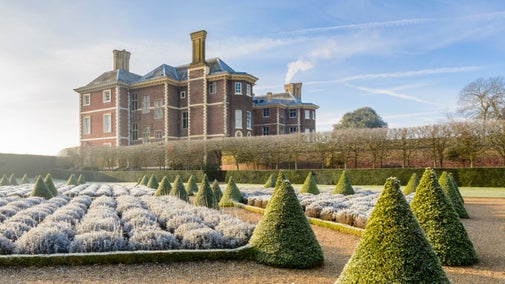
Discover more at Sandham Memorial Chapel
Find out when Sandham Memorial Chapel is open, how to get here, the things to see and do and more.

Sandham Memorial Chapel is home to arguably the most important series of paintings by the modern British artist, Stanley Spencer who wanted to express his military experience during 'The Great War' in paint. Find out about the paintings that line the chapel walls, and the almshouses which host exhibitions. Services continue to run from April to November on the first Thursday of the month at 10am.
The 19 oil paintings that cover three walls of the chapel took six years to complete and are considered by many to be artist Stanley Spencer's finest achievement. With the chapel built to honour the 'forgotten dead' of the First World War, who weren’t remembered on official memorials, the series of artwork was inspired by Spencer’s own wartime experiences as a medical orderly at the Beaufort Hospital in Bristol and as both orderly and soldier on the Salonika front.
The paintings are striking in that they largely depict everyday routine rather than the horror of combat. Spencer’s initial posting as a medical orderly instilled in him a sense that the everyday and the menial could bring him closer to God. His wartime service took him to Macedonia where he continued service as a medical orderly and later as an infantryman.
When you visit, you might like to listen to our audio tour to give you an introduction to the paintings created by our volunteers, visitors and experts. Please remember to bring your headphones with you, and start the podcast just before your enter the chapel. Length: 9 minutes.
Click here to download the tour before you visitThe chapel, which was inspired by Giotto’s Arena Chapel in Padua, was paid for by the patrons and collectors John Louis and Mary Behrend. The Behrends later dedicated the chapel to Mary’s brother, Harry Sandham, who had died in 1920, shortly after returning from active service. You can find a memorial to Harry Sandham above the main chapel doors.
Adjoining the chapel are two almshouses previously occupied from the 1930s. Following a restoration project, one of the almshouses was recreated to represent that era using original colour schemes and products appropriate to the period. It houses an exhibition space over three rooms with descriptive panels, interactive tablets, facsimile archive material and a short film.

Find out when Sandham Memorial Chapel is open, how to get here, the things to see and do and more.
Discover all about this unique chapel and how 20th century artist Stanley Spencer came to create such an impactful memorial to everyday life in the First World War.

Explore the garden wrapping around the chapel, including an orchard, meadow and Garden of Reflection. Sit in this tranquil space to pause and consider the striking paintings.

The small shop has a selection of mementos and books. Picnic spots provide ideal places to bring your own refreshments and enjoy the surrounding garden.

Historic houses and buildings are full of stories, art and collections. Learn more about their past and plan your next visit.

Explore a variety of historical houses and unusual buildings in Hampshire, from grand mansions to historic mills.
